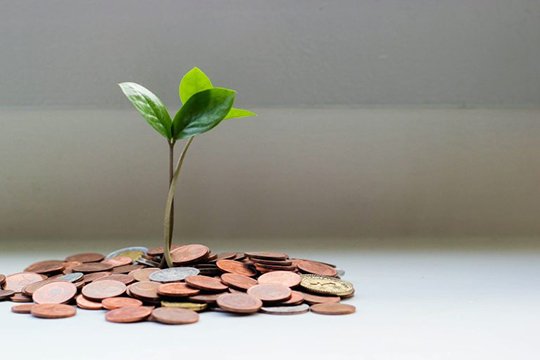This blog is authored by Peter Trousdale with contribution from Yang Jia.
 Photo@Visual Stories Micheile on Unsplash
Photo@Visual Stories Micheile on Unsplash
The green finance market, including climate finance, has provided a dedicated space for investors to channel funding towards green businesses and the development of carbon-neutral and negative technologies. However, many traditional sectors that play a crucial role in the economy, such as the steel industry, energy supply and aviation, lack adequate financing to transition to low-carbon activities. This is where transition finance comes in.
The recent IPCC report has clearly linked GHG emissions to a rapidly warming climate and subsequent rise in catastrophic weather events. The increasingly urgent call to curb emissions requires a rapid and complex transition to a low-carbon economy in line with a 1.5℃ pathway. Expanding the green finance market to include the funding of transition activities can help ensure that economic activities needed in the post carbon-neutral economy can contribute to and coexist with emissions target pathways.
In recent years, we have seen growing awareness of transition finance globally. OECD first came up with the idea of “transition finance” in 2019 in reference to financing the transition of activities towards SDGs. In 2020, Climate Bond Initiative (CBI)1 and International Capital Market Association (ICMA)2 issued respective reports and guidance about transition finance and narrowed the definition to financing climate-related transitions.
In China, Mr. Zhou Chengjun from the People’s Bank of China (China’s central bank) pointed out that considering the limitation of green finance’s current scope, transition finance should play an important role in leading the low/zero carbon transition of carbon-intensive industries, which is essential for China to achieve the “30·60“ goals. While policies and standards for transition finance have not been widely adopted, “transition bonds” have been issued in practice by commercial banks, such as the Bank of China (BOC).
Dr. Ma Jun, Chairman of China’s Green Finance Committee, enforced that there are three critical factors for transition finance: 1) a clear roadmap of carbon reduction; 2) monitoring, reporting and disclosing mechanism; 3)and multi-level financial incentive policies.3
Transition Finance Mechanisms
Transition finance provides a set of financial mechanisms for carbon-intensive industries and activities to undertake complex transformations to reduce their carbon output and meet environmental and social sustainability goals. There are currently two primary financial mechanisms to provide funding for transition activities:
Use-Of-Proceeds Bonds allow carbon-intensive industries to sell specially tailored bond issuances and use the proceeds to fund individual low-carbon activities. These projects are selected to help companies reduce emissions and achieve long-term climate objectives. Many of the projects include infrastructural solutions to transition away from fossil fuels and green the industrial sector.4
Sustainability-Linked Bonds provide a means to incentivize the adoption of sustainability goals on a company-wide level rather than for specific projects. This future-focused instrument allows companies to raise funds under the precondition that they commit to meeting specific sustainability performance metrics and ESG goals within a set timeline. Failure to meet these targets will result in the unfavorable restructuring of the loan for the lender.5
Transition finance mechanisms, however, are not limited to bonds. Financial institutions are also using sutainability-linked loans and other financial products to incentivize the climate transition of carbon-intensive industries.
Need for Universal Guidelines
While the need to decarbonize the world's high-carbon industries is clear, the path to doing so is missing the regulatory instruments essential to ensuring success. Accurate and expansive climate-related financial data is needed to measure and compare transition finance projects to ensure they reach the science-backed targets required to combat climate change.
Several existing guidelines provide issuers and investors with the blueprint for what makes a credible transition finance transaction. Two of the most widely discussed guidelines come from the Climate Bonds Initiative "Financing Credible Transitions" Whitepaper6 and the International Capital Market Association Transition Finance Handbook7 and Sustainability-Linked Bond Principles. These documents emphasize the following principles (among others) that issuers must follow:
• Adherence to a transition strategy in line with a 1.5℃ pathway
• Transition projects and pathways must be based on commonly agreed-upon science
• Issuers must provide metrics and data to prove the validity of their actions
These principles are designed to ensure the transparency of issuer's transition and prevent the practice of greenwashing their bond issuances, whether at the activity or entity level. While additional guidelines exist to specify the necessary actions of issuers and investors, these three provide a basis for what makes a credible and successful transition finance transaction.
A Case Study of Transition Finance
Suzano Sustainability Linked Bond8
In September of 2020, Brazilian pulp and paper producer Suzano became the world's first issuer of Sustainability-Linked Bonds within the framework of the ICMA's guidelines and the first transition bond in an emerging market. The bond is intended to help the company reach its goal of becoming carbon neutral and eventually carbon negative. Issuance Details:
• Sold $750 Million worth of 10-year SLBs
• Coupon of 3.95%
Suzano must meet its self-created Sustainability Performance Target of a 15% reduction in carbon emissions by 2030. If Suzano fails to meet this target, it will result in a one-time step-up penalty of 25 Basis Points.
The bond issuance was so oversubscribed that Suzano reopened the offering with an additional $500 million in bonds at a 3.1% coupon.
Challenges
The Suzano examples highlight the benefits and drawbacks of the transition finance market as it currently stands, specifically a lack of disclosure regarding environmental and financial information.
Regarding Suzano, questions have emerged concerning how the paper manufacturer will spend the proceeds from its bond issuance. SLBs prioritize market participants' focus on meeting predetermined sustainability metrics with little attention to what money is spent on to get there. Additionally, while Suzano's GHG emissions KPI is clear and measurable, lack of disclosure requirements renders it impossible to compare the company's performance against its peers.
Looking Forward
Ensuring that robust guidelines are universally accepted and enforced is the key to establish a credible and well-functioning transition finance market. This credibility rests on the ability to measure and compare the results of key environmental performance metrics from participants in the transition finance market. The Suzano market transactions represent the beginning of what is possible when utilizing transition finance mechanisms.
The clear imposing threat of catastrophic changes to earth's weather patterns by way of a rapidly warming climate is a call to action. Regulators, industry actors, and investors need to do more to address GHG emissions and overhaul damaging business models. Transition finance provides the ability to bring a broader range of sectors and actors into the sustainable finance space, funding the transition to a 1.5 ℃ Future.
Reference:
1. Climate Bonds Initiative. Financing Credible Transitions. (September, 2020).
2. ICMA. Climate transition finance handbook. (December, 2020).
3. NRDC. Leverage Transition Finance to Support Low-carbon Transition of Shanxi. (September 13, 2021)
4. Shapiro, L. Transition finance: Finding a path to carbon neutrality via the capital markets. (March 9, 2021)
5. ICMA. Sustainability-Linked Bond Principles. (June, 2020).
6. Climate Bonds Initiative. Financing Credible Transitions. (September, 2020).
7. ICMA. Climate transition finance handbook. (December, 2020).
8. Berrospi, M. Suzano prints FIRST Em sustainability-linked bond. (September 11, 2020)


